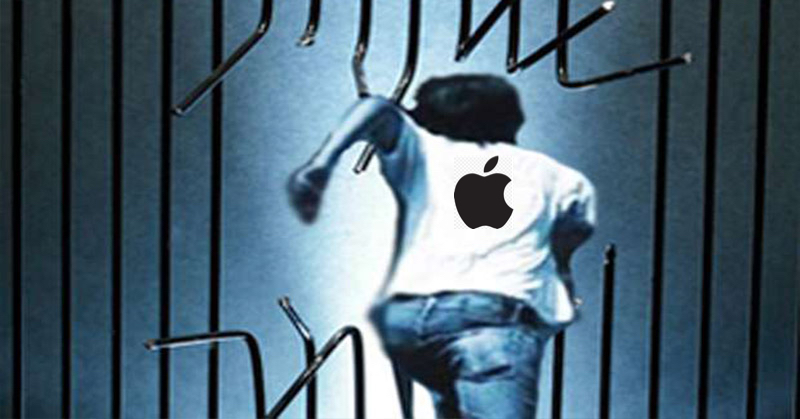Apple appears to be making some serious moves to try and curb the jailbreak community. With iPhone 7 and iOS 10 came fewer jailbreaks than ever before, and now that Pangu has become a mature security team rather than remain a maverick bunch of hackers who kept feeding the jailbreak community (don’t expect an iOS 10.3.1 jailbreak to come from them), the jailbreak landscape does look very bleak, indeed.
But how is Apple killing off jailbreak options going to hurt the company, if at all?
RELATED ARTICLE: The Whole Truth About Pangu’s iOS 10.3.1 Jailbreak, and the Future of Jailbreaking
From what we’ve seen, a lot of iPhone owners only buy the devices so they can jailbreak and customize them the way they want to. Many do it for the tweaked apps, and some do it to get banned apps from outside iTunes.
The real question is, how badly will it impact iPhone sales moving forward? Apple is already struggling with sales growth, and over the past year they’ve seen more than one quarter with negative growth. That means they sold fewer iPhones that quarter than during the same quarter a year ago.
Even in the most recently reported quarter (Jan to March), iPhone sales dipped by 1 percent year over year.
That’s a sign of a larger problem of not being able to deliver the same kind of innovation that earlier iPhones did. From iPhone 6 through to iPhone 7, everything they’ve launched has been an incremental upgrade rather than a game-changing one.
It’s clear that Apple is running out of ideas. The company is now trying to piggy-back on what Samsung already does, like using curved OLED, glass backs, wireless charging and so on.
Against this dismal backdrop for iPhone sales, will the killing off of jailbreaking hurt them even more?
RELATED: Frustrated with Unstable iOS 10 Jailbreaks? Try Sideloading Instead – No Jailbreak Required
That’s a very likely possibility. We have to remember that iPhone sales that are reported every quarter don’t only include the latest released version. For example, during the Oct to Dec 2016 quarter, the majority of sales are likely to have been iPhone 7 and iPhone 7 Plus, but a significant portion will have been older models that are still available from Apple’s online store, retailers and mobile carriers.
Of that subset, a further subset will be people who buy older models just to jailbreak them.
It might not be much, admittedly, but considering the size of the jailbreaking community around the world, it cannot be an insignificant number. What makes it even worse is that people are now generally aware that there aren’t going to be any more new untethered jailbreaks for any existing or future Apple devices. In fact, we might not see any new jailbreaks until some new hacker or hacking team is able to find a new flaw in recent iOS versions like iOS 10.3.2 and the beta iOS 10.3.3.
With iOS 11 right around the corner, it could be months before we see any new jailbreakers break into the scene. Most of the big names are already either working for or with Apple to help them identify and patch vulnerabilities that may lead to an jailbreak exploit.
That means people who typically buy the latest iPhone – in anticipation of a jailbreak that usually follows – might switch to Android and start buying Samsung premium devices instead, as many of our commenters in recent articles have threatened to do.
This is definitely not a good scenario for Apple, even though their priority at this time seems to be to secure the iOS ecosystem as best they can. With ransomware, phishing and other forms of cyber attacks on the rise, Apple wouldn’t want millions of iPhones to be hit by a major security attack the way jailbroken phones, primarily in China, were targeted two years ago.
To be clear, Jailbreaking isn’t going to go away that soon, because iOS is merely software. And where there’s software, there’s always a vulnerability or flaw that can be used to develop a jailbreak. Apple will never be able to wipe out jailbreaking completely.
That said, however, they can make it so difficult to develop an exploit, and so attractive to actually report the flaw to Apple rather than release a free jailbreak to the public, that they can restrict jailbreak attempts to a significant degree.
Apple is not all-powerful, so don’t get me wrong, but Apple is powerful enough to make such a thing happen. And we believe that process has been ongoing for a year or more – at least from the time iOS 10 was released.
That’s why you’ll notice that jailbreak announcements are thinning out, even though fake jailbreaks and malware-loaded IPA files for “newly released” jailbreaks abound on YouTube and other social media platforms.
We believe that experts that are still serious about jailbreaking will now head back to the trenches to re-strategize the next wave of attacks on iOS. Like I said, iOS is software, and software is not perfect. That might take several months, or it might come sooner than we expect.
For that reason alone, we recommend that you save your blobs for current signed versions of iOS as soon as you upgrade to them – ideally, even before you upgrade. Tools like TSS Saver from 1Conan will help you do that.
Apple, meanwhile, is handling a double-edged sword at the moment. They might succeed in thinning down the jailbreak community by a few million users, but in the process, they might just hurt their own ailing iPhone sales figures in the months to come.
RELATED ARTICLE: No iOS 10.3.1 Jailbreak Yet? No Problem, Get Sideloading – it’s What You Want Anyway
Thanks for visiting! Would you do us a favor? If you think it’s worth a few seconds, please like our Facebook page and follow us on Twitter. It would mean a lot to us. Thank you.



